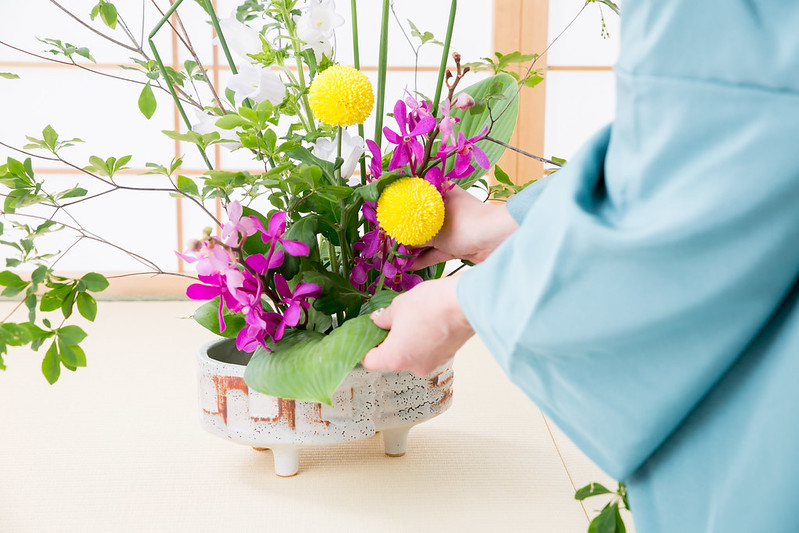
Ikebana: Classic Japanese Art of Flower Arrangement
Ikebana, “flowers kept alive,” is much more than just placing plants in a vase. A lot of thought and preparation go into the placement of each stem, leaf, and blossom. The result is a visual art form breathtaking in its blend of colors, complementary lines and shapes, and symbolic expression.
It’s well known that the Japanese love nature to the point of reverence. The aim of ikebana is to capture the impermanent and mercurial beauty of nature, and to celebrate it even while indoors, through a contained medium.
Over 3000 ikebana schools exist in Japan, and there are many more worldwide. Each school practices various styles; here are some of the most popular.
Ikebana- a Japanese art of flower arrangement.
Ikenobo –the oldest ikebana school, founded in the 1400s by Ikenobo Senkei, a Buddhist priest. The rikka (standing flowers style), said to have been created by him, is a formalized composition of seven branches symbolizing elements in nature such as waterfalls, valleys, and fields. Two centuries later, a more relaxed style was created, the seika or shoka, that made use of only three branches in a triangular structure that primarily showcased the plant’s loveliness.
The nageire, or thrown-in style, is an old technique still highly popular today. It’s more spontaneous than the rigid rikka style and is mainly found in tea ceremony houses. Tall vases hold the arrangements.
Traditional japanese house with shoji sliding paper doors and ikebana decoration.
The Ohara school, created in the 1800s, uses the moribana (piled-up flowers) style. The arrangement is placed on a wide, shallow container. In the 1800s, Western culture was prominent in Japan, and Western plants were often used in the design.
Sogetsu – founded in 1927, this school introduced modern approaches, using materials like plastic and steel. Zen-eibana, avant-garde ikebana, paved the way for the transition of ikebana’s popularity from a strictly upper-class practice to something more accessible to the mainstream crowd.
Today, ikebana is taught in schools, workshops, books, videos, and even on the internet. Each style has its following.


